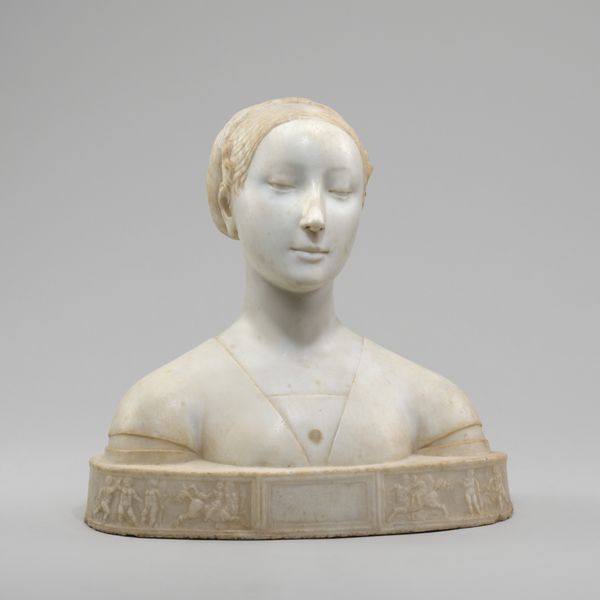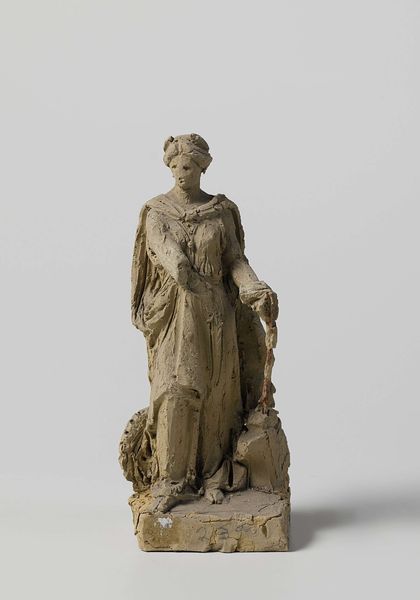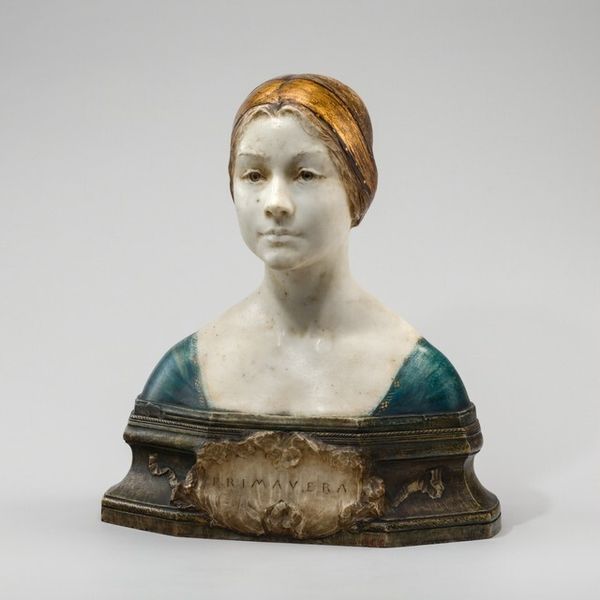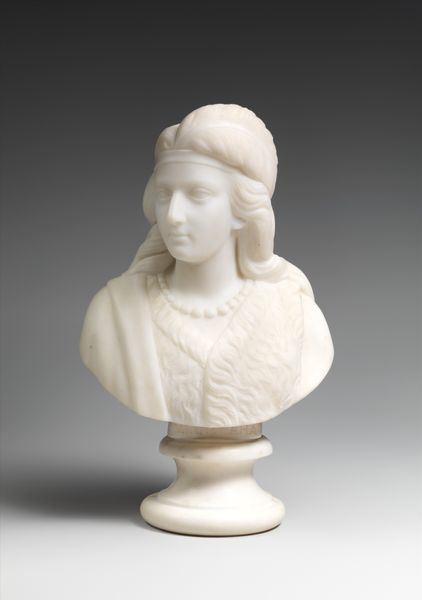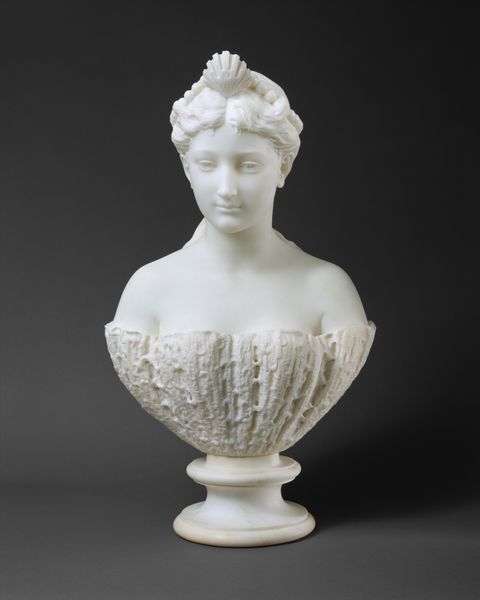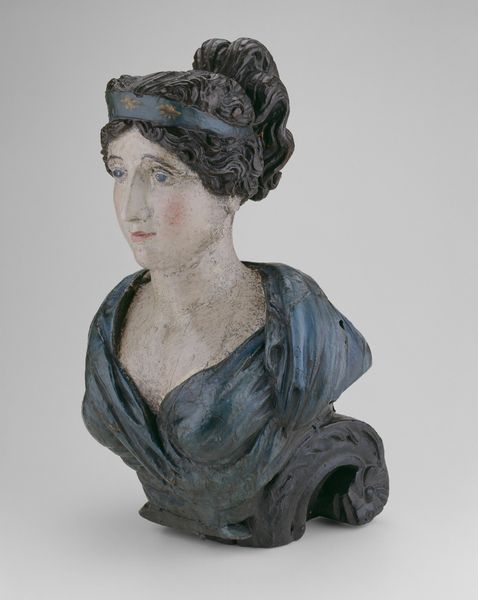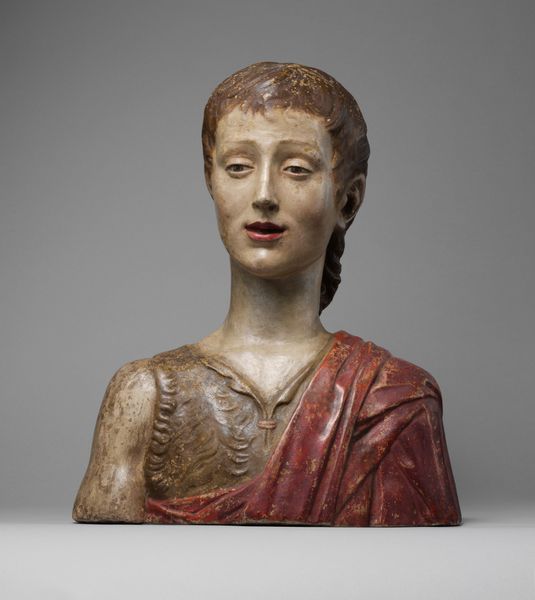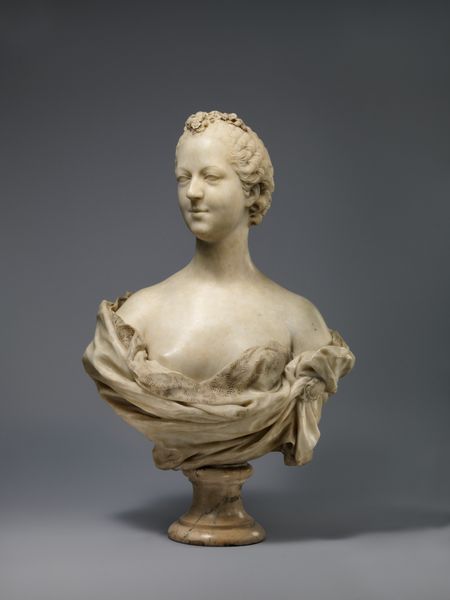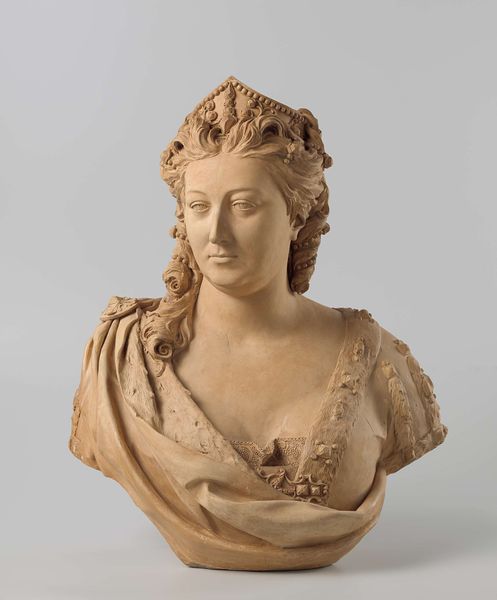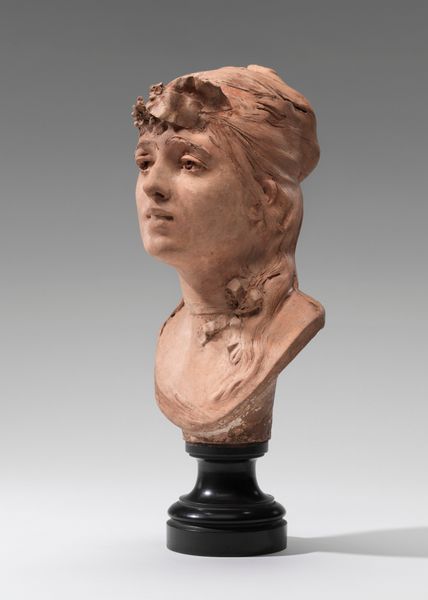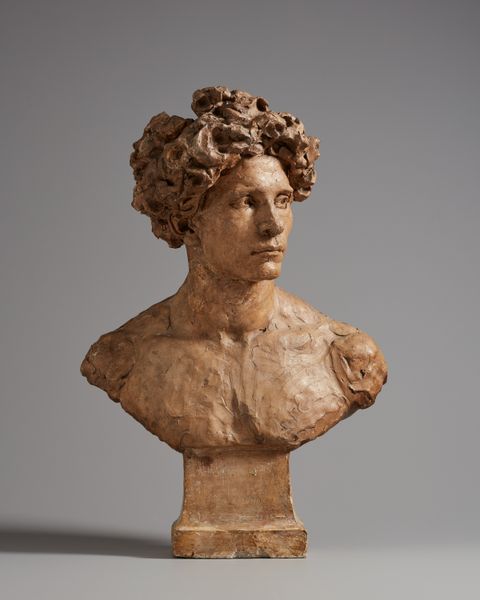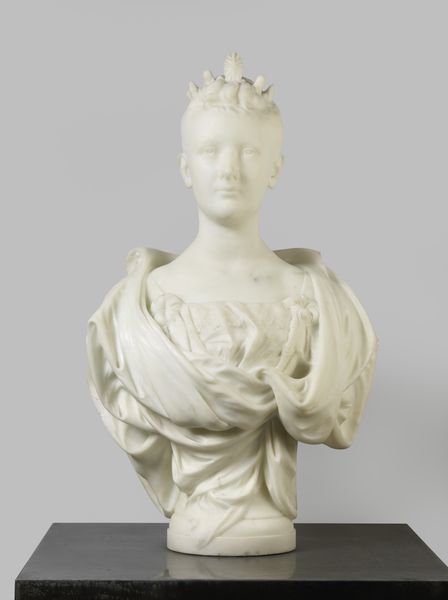
carving, sculpture, marble
#
portrait
#
carving
#
sculpture
#
sculpture
#
marble
#
italian-renaissance
Dimensions: height 48 cm, width 46.5 cm, thickness 21.5 cm
Copyright: Rijks Museum: Open Domain
Curator: The way she's looking down is so sad. There's this deep thoughtfulness to her face that makes you wonder what's on her mind. It seems like she carries the weight of something more significant than just being a pretty face. Editor: Absolutely. "Borstbeeld van een jonge vrouw," or "Bust of a Young Woman," by Jacopo della Quercia, sculpted in marble around 1400-1440, offers such visual nuance, doesn’t it? Curator: Definitely. Considering the context, sculptures of women during the Italian Renaissance were often representations of ideal beauty or symbols of virtue, so looking at this sculpture, I wonder how this piece challenged or subverted these standards of representation. Did the artist create the piece on commission? Is she known? These questions impact my interpretation, positioning her as an individual and reflecting the complexities of womanhood during that time. Editor: The carving and subtle polish give a tactile quality, almost breathing life into cold marble. It’s not just representational; it's sculptural finesse at its peak, showing off the artist's virtuosity with stone. And then there is also the formal balance... Note how the tilt of her head is counter-balanced by the soft cascade of the drapery around her shoulders, drawing attention to her delicate neck and thoughtful expression. Curator: Yes, and I also wonder, since gender and beauty were intrinsically linked to social standing, power, and virtue in the Renaissance, how this informs or perhaps critiques society's ideals surrounding gender and status? Editor: I agree, and viewing this in purely formal terms also presents new aspects for the viewer to ponder: What about the relationship between line and mass, light and shadow? Curator: Exactly, the act of representing her at this moment immortalizes a fleeting moment in her existence. It also provokes discourse about art’s relationship to representation, societal roles, and the politics of female portraiture. Editor: It’s interesting how our differing perspectives reveal varying depths, inviting us to view the work in a multitude of ways. Curator: Yes, and through different insights, this piece serves as a visual intersection, providing context on art, culture, and the story of its time.
Comments
No comments
Be the first to comment and join the conversation on the ultimate creative platform.

